Metallic moments: Michael Young presents the evolution of aluminium
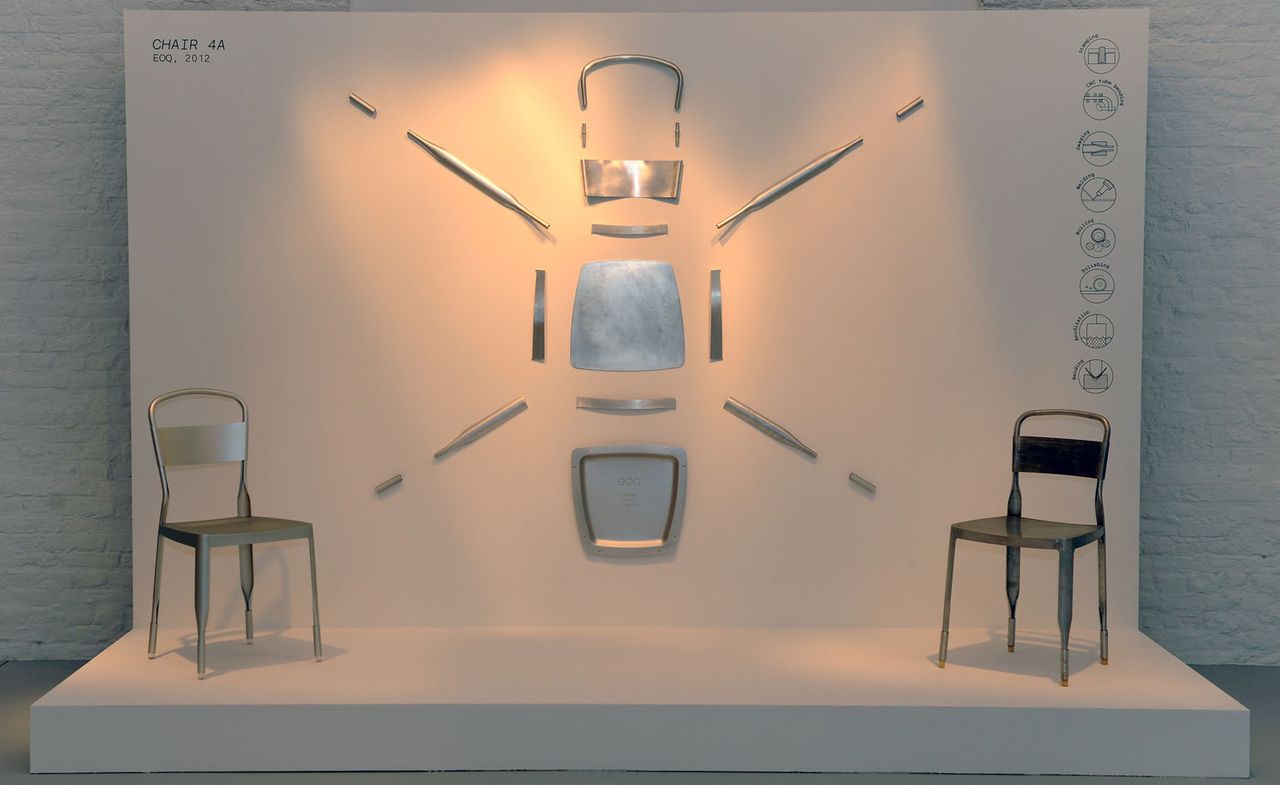
The eclectic, crafted work of British-born, Hong Kong-based designer Michael Young marries engineered technology with a sculpted artistic flair. Producing everything from industrial watches to functional furniture for the likes of Coalesse and Lasvit, in addition to special collections for various galleries, his sense of experimentation is imbued with East-meets-West influences.
Curator Maria Cristina Didero is investigating that experimentation with a fine tooth comb, focusing on his works in aluminium in an immersive installation at the Centre d’innovation et de design at Grand-Hornu in Boussu, Belgium.
It's ever so exciting when the subject of a solo exhibition magnifies one section of a designer’s oeuvre. Yet what is created here is even more special. Didero and Young present an accidental history, demonstrating the evolution of one chemical material. We see Young's work deconstructed in the 12 installation stands that take over the neoclassical space. His rock-style 'Oxygen' chairs from 2015 are displayed in their original moulding; while the more simplistic, recycled aluminium 'Chair 4A' is shown dismantled with each part spread across the wall.
The versatile quality of the material is also shown hanging from the ceiling. Scaled up against a 2.2kg weight is Young's 'Lessthanfive' chair for Coalesse, emulating the extremely light-weight quality of the metallic element.
Both Didero and Young took Grand-Hornu’s architectural silhouette as a starting point for the show. ‘It has been a very interesting journey up to this show,’ Didero explains. ‘The first time we visited Grand-Hornu we were very inspired by the architecture of this building.’ To wit, the works are cleverly set out in an L shape that relates to the symbol of the element itself (AL).
Yet what makes the exhibit a uniquely alluring experience is one particular added extra. In extension to Young’s pieces, there is a section dedicated to other designers' works in aluminium. Titled ‘The Crypt’, Young and Didero have recognised contributions from the likes Jean Prouvé, Charles and Ray Eames, Barber & Osgerby and Ross Lovegrove to the world of aluminium design. ‘We made a selection based only on our personal taste,’ Didero adds of the humble approach and collection.
‘AL(L) Projects with Aluminum’ is a rare moment in the limelight for the metal – the experimental industrial development of which is so effectively shown through the contemporary designers that have made it possible. The show presents those included in what Didero describes as a ‘collective, choral experience with the material’.
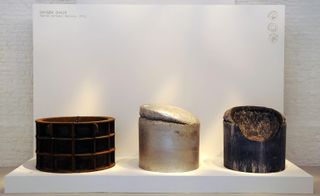
Curator Maria Cristina Didero explores the evolution of the element in an exhibition that spreads across 12 stands.
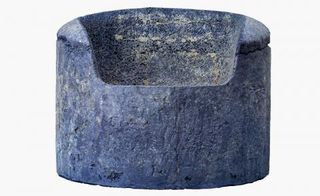
Both Didero and Young took the Grand-Hornu’s architectural silhouette as a starting point for the show.
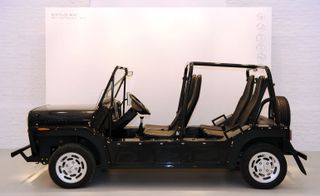
The works are cleverly set out in an L-shape, relating to the symbol of the element itself (AL).
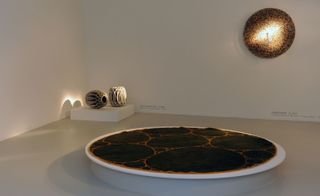
Pictured from left: ’Kaleidoscope’ stool, 2011; hand knotted ’Tekke Rug’ for Christopher Farr, 2014; special edition ’Newspaper Clock’, 2011
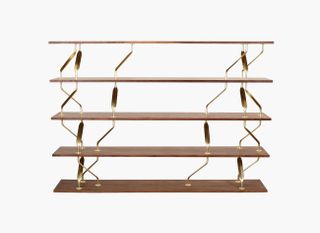
'Bayer' shelf for EOQ, 2012
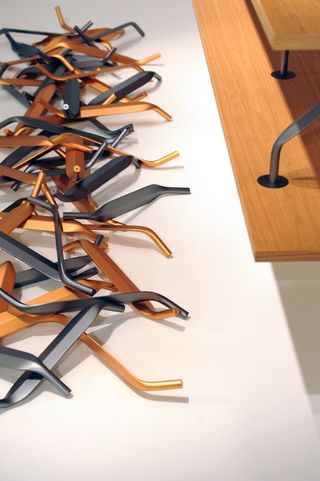
The special aluminium links of the 'Bayer' shelf for EOQ, 2012.
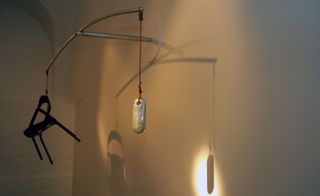
The versatile quality of the material is also shown hanging from the ceiling – scaled up against a 2.2kg weight is the 'Lessthanfive' chair for Coalesse, emulating the extremely light-weight quality of the element.
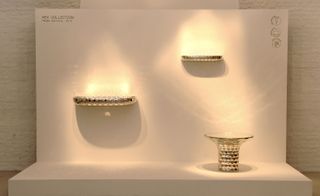
The ’Hex’ collection for Hedge Gallery, 2012
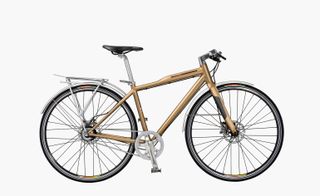
'City Speed' for Giant, 2009
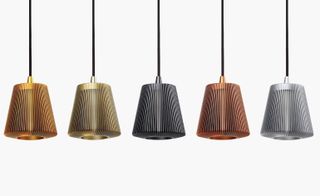
'Bramah' pendants for EOQ, 2012
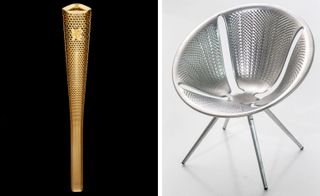
In extension to Young’s pieces, there is a section dedicated to other designer-made aluminium works, titled ‘The Crypt’. Left: Olympic Torch by BarberOsgerby. Right: Ross Lovegrove’s ’Diatom Chair’ for Moroso
INFORMATION
’AL(L) Projects in Aluminium by Michael Young’ is on view until 29 May. For more information, please visit CID at Grand-Hornu’s website
ADDRESS
CID at Grand-Hornu
Site du Grand-Hornu
Rue Sainte-Louise, 82
7301 Hornu
Wallpaper* Newsletter
Receive our daily digest of inspiration, escapism and design stories from around the world direct to your inbox.
Sujata Burman is a writer and editor based in London, specialising in design and culture. She was Digital Design Editor at Wallpaper* before moving to her current role of Head of Content at London Design Festival and London Design Biennale where she is expanding the content offering of the showcases. Over the past decade, Sujata has written for global design and culture publications, and has been a speaker, moderator and judge for institutions and brands including RIBA, D&AD, Design Museum and Design Miami/. In 2019, she co-authored her first book, An Opinionated Guide to London Architecture, published by Hoxton Mini Press, which was driven by her aim to make the fields of design and architecture accessible to wider audiences.
-
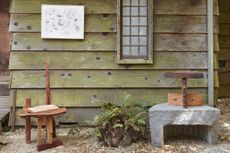 Rio Kobayashi’s new furniture bridges eras, shown alongside Fritz Rauh’s midcentury paintings at Blunk Space
Rio Kobayashi’s new furniture bridges eras, shown alongside Fritz Rauh’s midcentury paintings at Blunk SpaceFurniture designer Rio Kobayashi unveils a new series, informed by the paintings of midcentury artist Fritz Rauh, at California’s Blunk Space
By Ali Morris Published
-
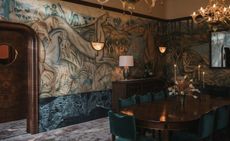 New York restaurant Locanda Verde’s second outpost will transport you to a different time and place
New York restaurant Locanda Verde’s second outpost will transport you to a different time and placeLocanda Verde’s expansive new Hudson Yards osteria exudes a sophisticated yet intimate atmosphere overflowing with art treasures
By Adrian Madlener Published
-
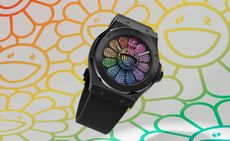 LVMH watch week 2025: everything we know so far
LVMH watch week 2025: everything we know so farOur guide to LVMH Watch Week 2025, taking place in New York and Paris, starting 21 January; keep an eye out for our updates
By James Gurney Published
-
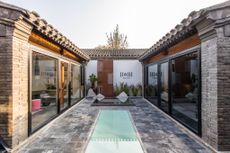 New global design destination House of Wang opens in Beijing
New global design destination House of Wang opens in BeijingA new retail destination offering a curated edit of the best contemporary design opens its doors within a historical setting
By Rosa Bertoli Last updated
-
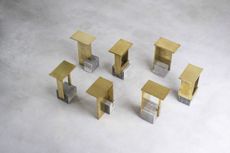 The minimal shapes of Studio Khachatryan
The minimal shapes of Studio KhachatryanShown inside Antwerp space St Vincent, Studio Khachatryan's collection of sculptural works blur the boundaries between function and abstraction
By Rosa Bertoli Last updated
-
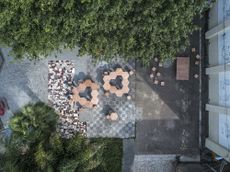 Plywood pavilion transforms into 410 furniture pieces
Plywood pavilion transforms into 410 furniture piecesIn Fuqing, a small rural community in China, 410 plywood tables and chairs have been constructed from Furniture Pavilion S, an architect-built exhibition space, giving a new lease of life to this temporary structure
By Sujata Burman Last updated
-
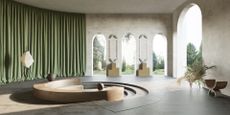 In Brussels, Collectible is a hotbed of multidisciplinary collaboration
In Brussels, Collectible is a hotbed of multidisciplinary collaborationInside the Vanderborght building in Brussels, Collectible design fair (5-8 March) invites experimentation in food, interior architecture and furniture
By Rosa Bertoli Last updated
-
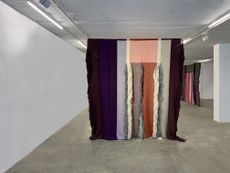 Debunking Belgian textiles clichés in New York
Debunking Belgian textiles clichés in New YorkBy Siska Lyssens Last updated
-
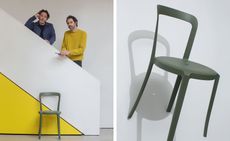 Barber & Osgerby and Emeco go green with a recycled, and infinitely recyclable, plastic chair
Barber & Osgerby and Emeco go green with a recycled, and infinitely recyclable, plastic chairLaunching at Salone del Mobile 2019, the sustainable ‘On and On’ chair is lightweight and stackable
By Ali Morris Last updated
-
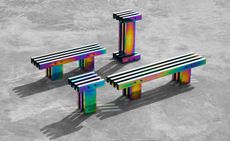 Meet the next generation of creative forces reshaping Chinese design topography
Meet the next generation of creative forces reshaping Chinese design topographyBy Yoko Choy Last updated
-
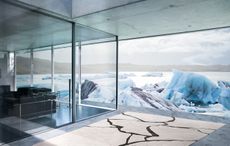 China’s design footprint evolves with a new Beijing showcase
China’s design footprint evolves with a new Beijing showcaseBy Danielle Demetriou Last updated